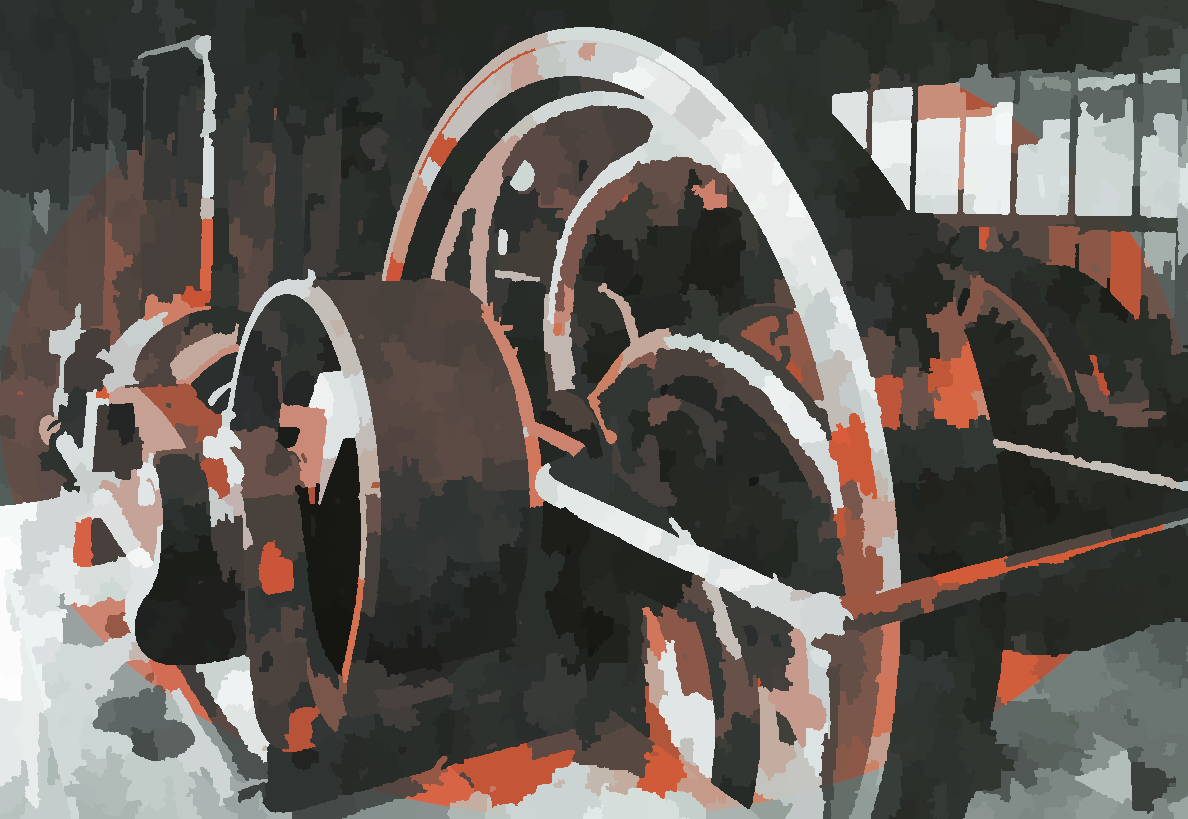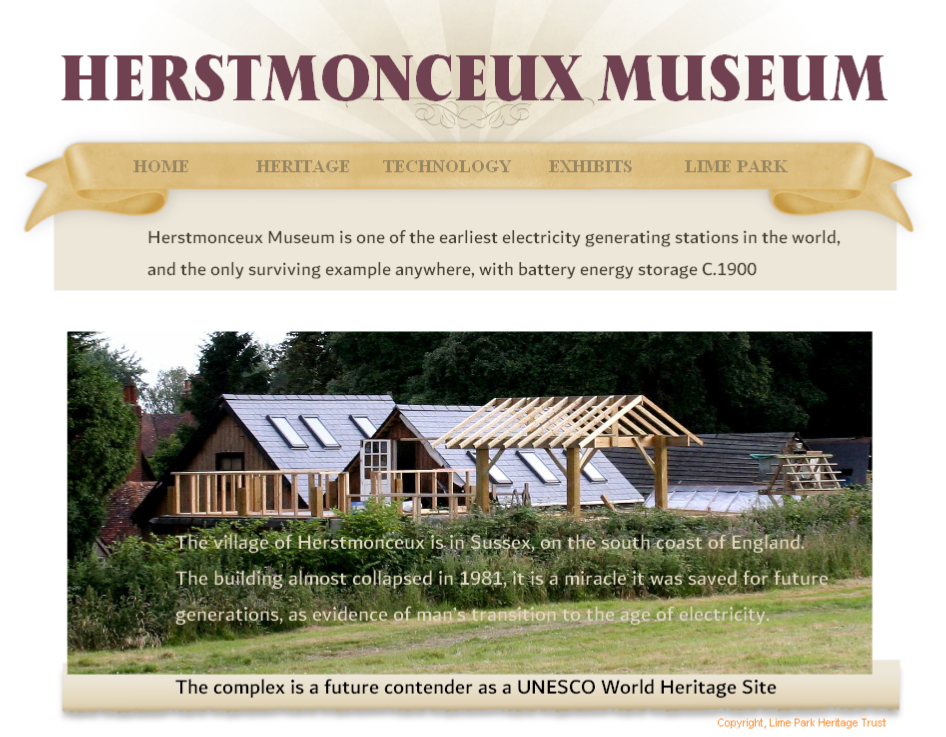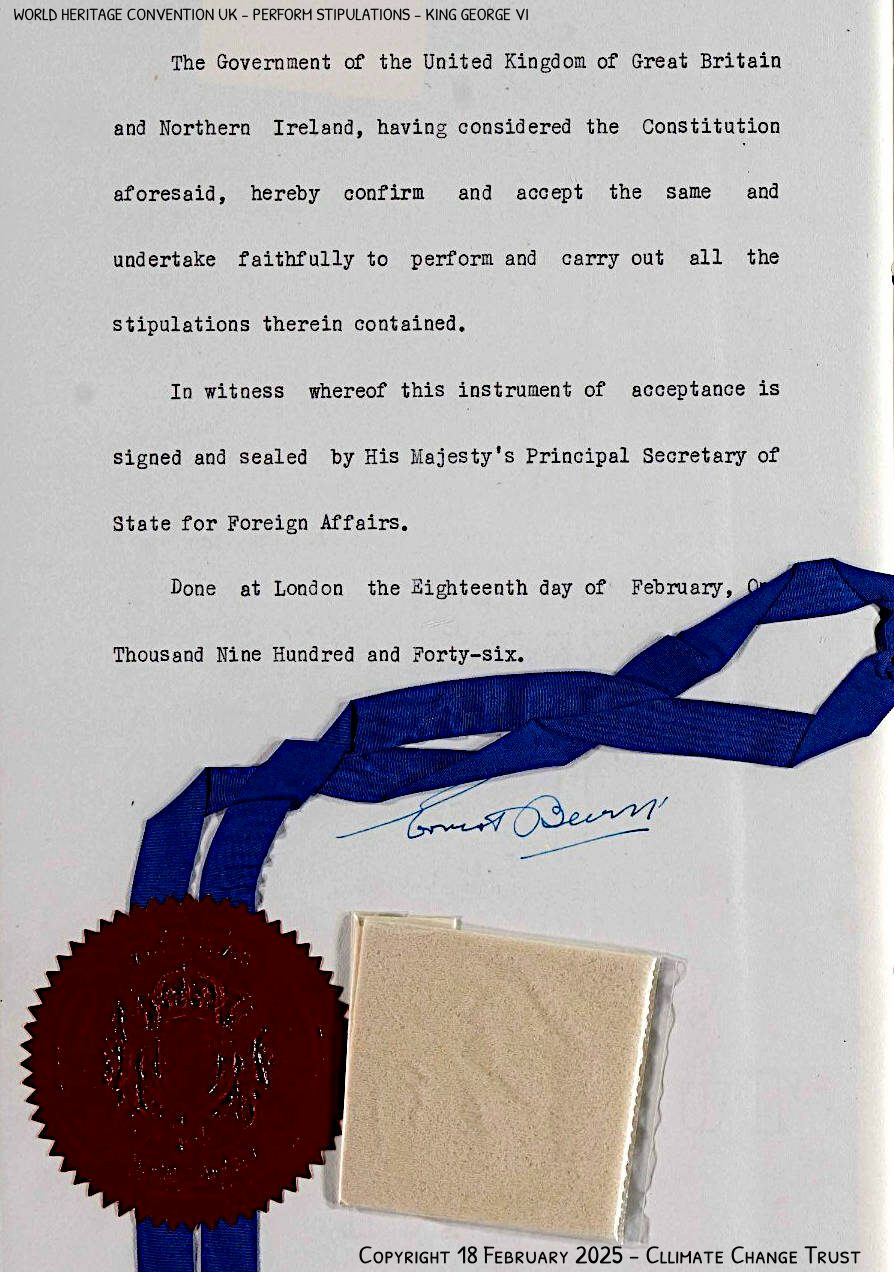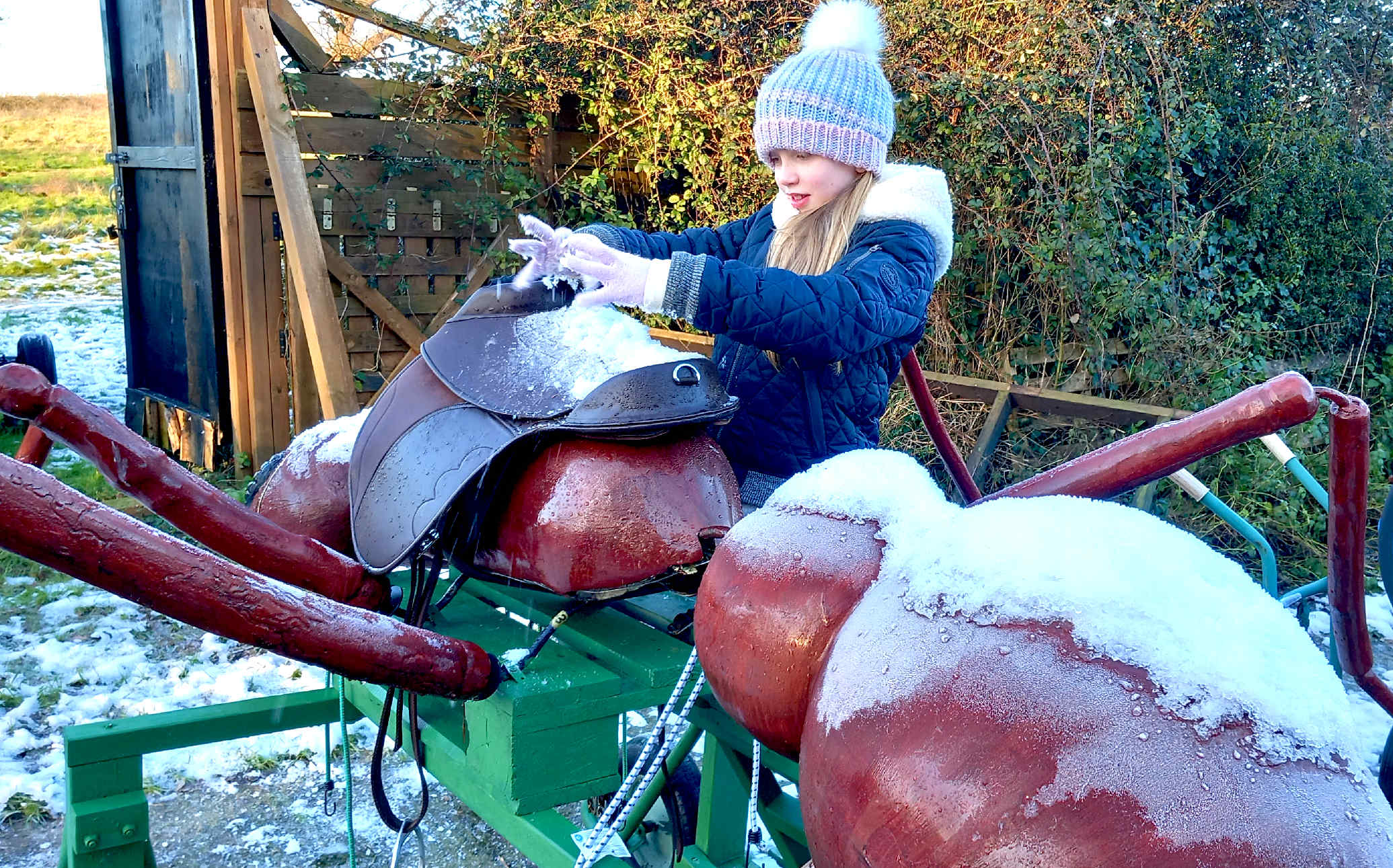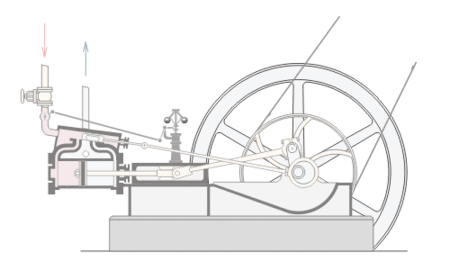|
H E R S T M O N C E U X |
M U S E U M |
||
|
EXHIBITS FRIENDS HERITAGE HOME LIME PARK OPEN DAYS PARKING TECHNOLOGY |
|||
The only surviving early example of load levelling (modern grid stabilisation) using battery storage C.1900. Worthy of Conservation.
In the twinkling of an eye, mankind has transitioned from the flint and fire, to electric vehicles, solar power and wind generation, computers & mobile phones. The acceleration of technology has been so fast, that in the rush to build skyscrapers, almost all evidence of how our electricity generating industry developed, has been demolished. Herstmonceux in Sussex is the UK's bastion of time.
Herstmonceux Museum is an Ecomuseum, not only in the sense of being a community asset, as an actual historic building, interwoven in the fabric of the developing village. But, also, because of the environmental work that has take place in this location over the years. To wit, the development of electric vehicles, and EV refueling systems, and the research into solar and hydrogen powered ocean transport. Beginning, just a few years before the turn of the Twentieth Century (20th century began on 1 January 1901 (MCMI), and ended on 31 December 2000) with the generation of electricity, and now opening up to the public to share this local heritage in the 21st Century.
Of the 1,157 listed UNESCO sites, worldwide, the last example of early battery energy storage for load levelling, is in England, just outside a tiny village called Herstmonceux, in East Sussex. Find us some 8 miles from the south coast, and the English Channel.
It takes 100s of years for a pond like this to mature to support so many species.
GREAT NEWS
In 2024 the Museum was open for more than the 20 days needed to become accredited. We soon realised that when our gates were open, walkers took the time to pay us a visit. our problem being that at the moment we can only be open for 28 days without a change of use planning application.
NOT SO GREAT NEWS
But that, at the moment, the generating building has no recognised use stemming from over 40 years of data misinformation that should properly be stricken from the copy book. This will aid development of the heritage aspect, starting from correct and accurate records. Which is after all a legal duty placed on officials operating in any position of trust.
Developer's bulldozers can destroy habitats like this in very short order by diverting natural water flow.
AND VERY BAD NEWS
Not long ago potholes in the village high street were repaired. This year they are back, and even worse than before. The problem is that every time you add a new house in the wrong location, the road crumbles faster - In addition, the proposed junction for locally proposed houses is alleged to be dangerous, with a traffic survey some 10 years out of date. Put simply, the A271 and Gardner Street, is no longer fit for purpose. The village of Herstmonceux badly needs a bypass to cope with the increase in traffic from housing developments in the region. We would urge East Sussex Highways and Wealden Council to spend some of their accumulated CIL payments on providing the infrastructure that is now in serious decline.
Along with all our supporters, we appreciate that the path to attaining world heritage status is neither fast nor easy, and fraught with potential pitfalls. But what is clear, is that for many years this monument to the Electrical Age, has been neglected, and may well constitute a special case under the Paris International Agreement: World Heritage Convention of 1972.
Accordingly, this website is dedicated to finding ways to overcome perceived obstacles, by way of a logical and phased restoration. No matter that much work may be needed to frame the archaeology as the star attraction of the Museum. We thus implore anyone involved in the process, to think positively and creatively, as we endeavour to do so. And to please help us to endure the administrative rigours along the way. Nothing is impossible if you apply yourself to the challenge. That is how Man walked on the Moon during the Apollo 11 mission. By applying the best of the best, until finally, Neil Armstrong set foot on the familiar celestial body (21 July 1969), with the immortal words: "That's one small step for man, one giant leap for mankind."
Effectively gifted to the forerunner of Lime Park Heritage Trust in the 1990s, our small group of conservationists are working hard to try and save this interesting industrial complex from the ravages of time, by way of achievable stages ONE, TWO, THREE, FOUR & FIVE. This is extremely important, as these buildings are the missing link in the transition from coal to renewables. As the last example of this technology, the site is surely a contender as a UNESCO World Heritage Site. Also a venue for Wedding receptions.
The current trend for modern low carbon energy parks, (battery energy storage systems) like that in Manchester (July 2023), are springing up all over Europe. Making the Museum, all the more relevant historically, as we move to combat climate change with renewables.
The Trust opened the buildings to the public in 2024, aiming for accreditation, campaigning rigorously to get this site the recognition it deserves on the world stage. We were open for more than 20 days, with visitors signing in before viewing the exhibits. We look forward to seeing you in the summer of 2025. With huge thanks to all our volunteers and friends.
Is this the world's largest insect? Anthony the giant 'Bulldog' ant is seen here at the entrance to the Museum, with a young volunteer (Miss Ocean) helper - who actually worked on the cart that Anthony sits on. 'Miss Ocean' is a conservationist, keen on the country and rewilding. She also hates ocean plastic, that hurts humpback whales & dolphins. And is worried about climate change that is warming the planet globally by burning fossil fuels that make greenhouse gases. In Wealden 47% of CO2 comes from transport, with another 35% from housing. Yet, despite declaring a Climate Emergency, sustainable timber flatpacks are non existent in the District, as are charging points for EVs on newbuilds or along the high streets and in car parks. Two obvious ways of lowering carbon footprints. We actually had snow in Herstmonceux January 2025.
Schools and colleges might be interested in our unique "Technology Trail," where they can see innovation at grass roots level, from the drawing board, to small scale testing apparatus, to completed vehicles at full size. This is something discussed at our AGM in September.
More information will be provided on this website for the 2024 season, as the Museum develops exhibits. Meantime, thank you for your patronage and patience. We ask that visitors should please be Fire Aware, with no smoking allowed on the premises. And please beware of falling branches while walking on the public footpaths and when visiting the premises.
|
|||
|
|
|||
|
EXHIBITS FRIENDS HERITAGE HOME LIME PARK OPEN DAYS PARKING TECHNOLOGY UNESCO
Copyright © 2023 - 2025 Lime Park Heritage Trust. A not for profit organisation with charitable objects.
|
|||
